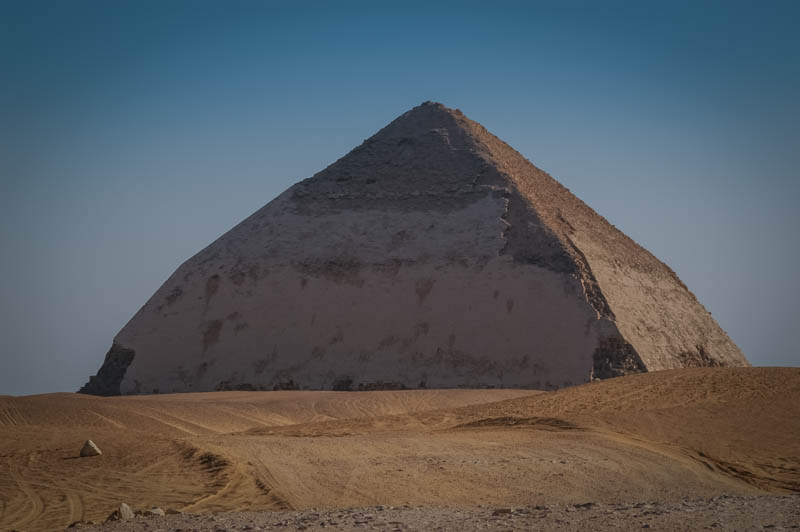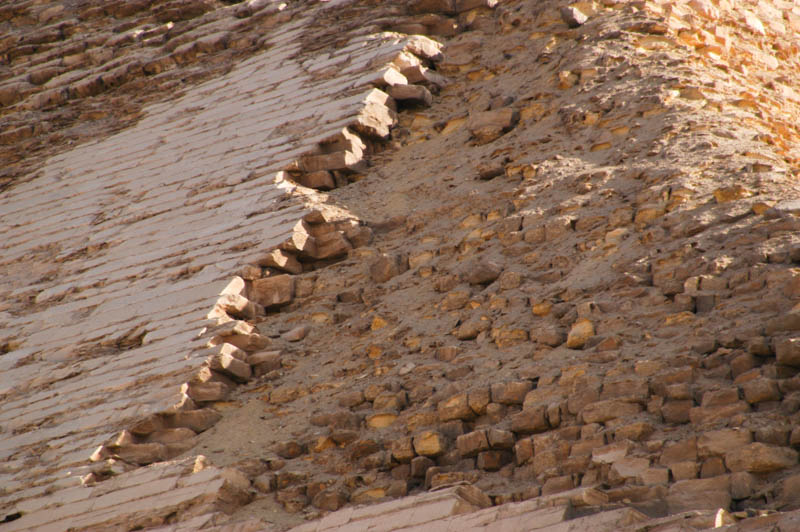We weren’t able to go in the pyramid (although, frankly, if you’ve been in one pyramid, they really aren’t that different inside most of the time). Usually they aren’t really decorated much; a long, angled tunnel down into the middle of the pyramid, a tall, narrow corbelled room, and then a burial pit or chamber.

Not only is the pyramid notable because of the strange angles, but also because a large portion of the original limestone casing is still intact.. Most of the casing on the top is gone, but the steep sides are mostly covered in smooth, pale blocks of Tura limestone. It is assumed that the steeper angle of the pyramid made it harder to strip the limestone from the sides. They are also angled slightly inward, which makes them harder to remove. For me, this doesn’t explain why the top is pretty much cleared of stone, unless the pyramid was perhaps buried in sand?
The change in angle appears fairly subtle, but the remaining pieces of the casing stone show a sharp angle change up close.
Nearly all pyramids would have had this limestone cladding, but in the five thousand years since, most of the stone has been removed. It was not necessarily used for building (the odd shapes and angles made it less easy to reuse the stones) but was burnt for lime. I can only imagine what the pyramids looked like clad in polished, smooth stone — or, as one of our guides suggested, painted bright white and decorated with many-colored pictures.

The casing stones are missing on the corners, so it’s possible to see the way they were fitted onto the roughly stacked blocks of the core. In addition, the lower courses of stone are gone, revealing grooves in the bedrock that were probably cut into the ground before the pyramid was built. These marks lead many Egyptologists to conclude that the building of pyramids started with the marking out of the bedrock for the placement of the stones.
One final weirdness of the pyramid is that is has two entrances — one on the west and another on the north. Most pyramids have only one entrance. The “standard” entrance on the north is about 12 m above the ground and leads down to the upper chamber inside. The opening on the west leads to the lower chamber. At some point, a corridor was cut between them.